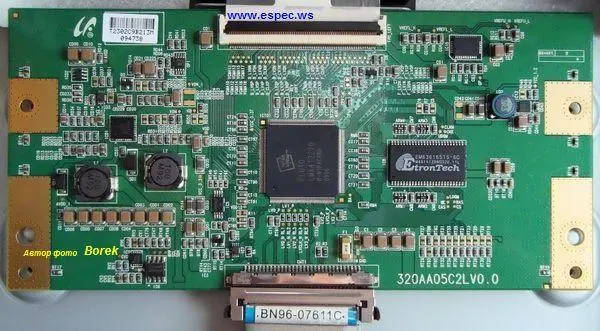630A 430V D.C. X114291: Comprehensive Guide and Industry Insights

Introduction
In the realm of industrial electrical components, understanding detailed specifications such as 630A 430V D.C. X114291 is crucial for safe and effective operations. This article aims to explore the significance, applications, and detailed breakdown of this specification to help professionals and enthusiasts gain a thorough understanding.
1. What Does 630A 430V D.C. X114291 Mean?
Understanding the meaning behind 630A 430V D.C. X114291 is essential for professionals who work with high-capacity electrical systems. This combination of numbers and codes indicates specific electrical capabilities and applications.
Source Address 5910d068: An In-Depth Analysis
Breaking Down Current (630A) and Voltage (430V D.C.)
- 630A (Amperes) refers to the electrical current the system can handle safely. It’s a high-capacity rating suitable for industrial-grade power distribution.
- 430V D.C. (Volts Direct Current) signifies the voltage type and level, with D.C. being ideal for systems that require steady power without the fluctuations associated with AC (Alternating Current).
Decoding the X114291 Code
The code X114291 is likely a manufacturer’s or industry-specific reference. It can denote a particular series or model of electrical equipment tailored to meet specific industrial needs.
2. Common Applications of 630A 430V D.C. Components
630A 430V D.C. systems are widely used in sectors where stable, high-capacity power is essential.
Industrial Use in Power Distribution
Facilities such as factories, mining operations, and heavy manufacturing plants rely on these specifications for efficient power management.
Role in Renewable Energy Systems
Due to the steady nature of direct current, 630A 430V D.C. components are also prevalent in solar farms and other renewable energy installations that depend on consistent energy flow.
3. Key Features of 630A 430V D.C. Systems
Understanding the key features of these components helps in assessing their value and applicability.
Advantages in High-Capacity Power
- High efficiency in power transmission over short and medium distances.
- Reduced energy losses compared to lower-rated systems.
Safety Features and Reliability
- Equipped with protective measures such as overcurrent protection and robust insulation.
- Designed to withstand high loads without overheating or degradation.
4. Technical Breakdown of 630A 430V D.C.
Diving into the technical properties provides insights into why these specifications are used.
Electrical Properties and Ampacity
- Ampacity refers to the maximum amount of electrical current the conductor can carry without exceeding its temperature limit.
- The 630A rating ensures reliable performance in high-demand situations.
Importance of Direct Current (D.C.)
D.C. power is preferable in certain applications due to its continuous flow, which can be vital for battery systems, UPS (Uninterruptible Power Supply), and electric vehicle charging infrastructure.
5. Standards and Certifications Associated with X114291
Ensuring compliance with industry standards is critical for safety and performance.
Relevant Safety Standards (e.g., IEC, ANSI)
- IEC 60947 and ANSI C37 standards provide guidelines for switchgear and control systems.
- Compliance with these standards ensures that equipment can withstand operational stresses and maintain safety.
Certifications for Compliance
Manufacturers often certify equipment with markings like UL (Underwriters Laboratories) or CE to demonstrate adherence to global safety requirements.
6. Installation Guidelines for 630A 430V D.C. Systems
Proper installation is essential to maintain system integrity and safety.
Step-by-Step Setup Procedures
- Plan the layout to ensure adequate spacing and accessibility.
- Secure the components with appropriate mounting techniques.
- Connect wiring according to the manufacturer’s specifications.
- Implement safety measures such as circuit breakers and fuses.
Best Practices for Safe Installation
- Double-check for correct polarity and grounding.
- Use protective gear during installation to avoid electrical hazards.
7. Maintenance Tips for 630A 430V D.C. Equipment
Regular maintenance extends the life and reliability of high-capacity electrical systems.
Routine Checks for Optimal Performance
- Inspect connections for signs of wear or loosening.
- Test circuit breakers and safety switches periodically.
Identifying and Addressing Common Issues
- Overheating can indicate poor ventilation or overloading.
- Loose or corroded connections should be tightened or replaced promptly.
8. Innovations in 630A 430V D.C. Technology
Technological progress continues to enhance the capabilities of these systems.
Emerging Trends in Power Distribution
- Integration of smart monitoring systems for real-time performance tracking.
- Use of advanced insulating materials to improve safety.
Technological Advancements Affecting X114291 Specification
- Modular systems that allow easier scalability and upgrades.
- Enhanced durability through the use of composite materials.
9. Comparing 630A 430V D.C. to Other Electrical Specifications
Choosing the right electrical specification depends on the application’s unique requirements.
Differences Between AC and DC Systems
- D.C. systems offer consistent power delivery, while A.C. systems may have voltage peaks and drops.
- D.C. power is generally preferred for shorter, more controlled circuits.
Alternative Ratings and Their Uses
- 400A 430V D.C. might be sufficient for smaller applications.
- Higher ratings like 1000A 430V D.C. are used for more demanding environments.
10. Case Studies: Successful Implementations of 630A 430V D.C. Systems
Looking at real-world examples illustrates the benefits of using these specifications.
Examples from Industrial Facilities
- Mining operations that utilize these systems to power large drills and conveyor belts with minimal downtime.
- Manufacturing plants that rely on steady current for robotic assembly lines.
Positive Impacts on Efficiency and Safety
- Increased operational uptime due to robust design.
- Enhanced worker safety through reliable power systems that reduce electrical risks.
FAQs
1. What is the significance of 630A in electrical terms?
The 630A rating represents the maximum current the system can handle safely, indicating it is suitable for heavy-duty applications.
2. Why use 430V D.C. instead of A.C.?
D.C. voltage provides a steady, unidirectional flow of electricity, making it ideal for systems where consistent power is required.
3. What does the X114291 code refer to?
This code is typically a part number or model identifier specific to a manufacturer, indicating particular specifications or standards.
4. How can I maintain my 630A 430V D.C. system?
Regular checks, proper ventilation, and ensuring secure connections are key to maintaining system integrity.
5. Are there any certifications required for using 630A 430V D.C. equipment?
Yes, look for certifications such as UL, IEC, or CE to ensure compliance with industry safety standards.
Conclusion
The 630A 430V D.C. X114291 specification plays a pivotal role in high-capacity electrical systems across industrial and renewable sectors. Understanding its properties, applications, and maintenance practices helps ensure safety, reliability, and optimal performance in demanding environments.



